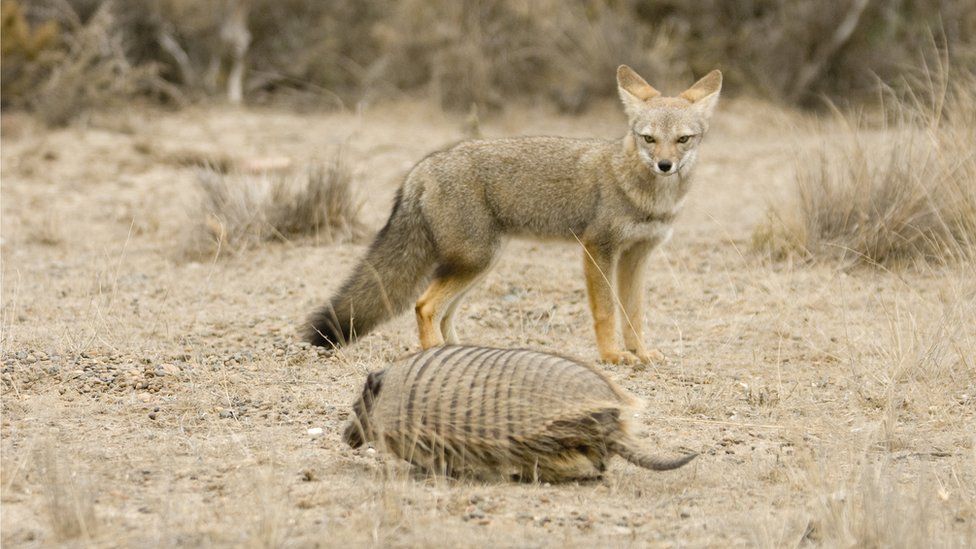ARTICLE AD BOX
 Image source, Getty Images
Image source, Getty Images
There are more than 10 species of South American fox, including the grey fox
By Helen Briggs
Environment correspondent
Our ancestors may have kept foxes as pets long before domestic dogs came on the scene.
Archaeological evidence suggests ancient human societies in South America revered foxes to such an extent that they were buried next to them.
Scientists were surprised to find a fox buried in a human grave dating back 1,500 years in Patagonia, Argentina.
They think the most likely explanation is that the fox was a highly valued companion or pet.
DNA analysis shows the animal dined with prehistoric hunter gatherers and was part of the inner circle of the camp.
A fox of the same species was found in a much older grave in another part of Argentina nearly a decade ago. It may also have been a pet but its diet was not analysed.
"This is a very rare find of having this fox that appears to have had such a close bond with individuals from the hunter-gatherer society," said Dr Ophélie Lebrasseur of the University of Oxford.
"I think it was more than just symbolic; I really do think it was companionship."
The fox was found at the burial site of Cañada Seca in Argentina, which was once inhabited by groups of hunter-gatherers.
Image source, Francisco Prevosti
Image caption,Investigation of the animal's bones revealed it belonged to a species known as Dusicyon avus, which died out around 500 years ago
Teeth of wild foxes have been found in ancient human burial sites across Argentina and Peru, suggesting the animal had symbolic significance.
But the discovery of a near-complete skeleton of a fox in a human grave is extremely rare in the worldwide archaeological record.
The fox, which goes by the scientific name, Dusicyon avus, was of a medium size weighing 10-15 kg. It went extinct around 500 years ago, a few hundred years after domestic dogs arrived in Patagonia.
The research was carried out in collaboration with Dr Cinthia Abbona of the Institute of Evolution in Mendoza, Argentina, and published in the journal, RoyalSociety Open Science.
Follow Helen on X @hbriggs.

 9 months ago
62
9 months ago
62








 English (US) ·
English (US) ·